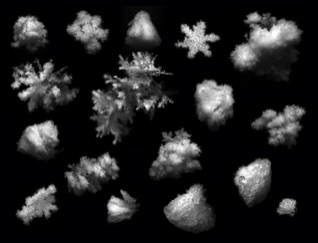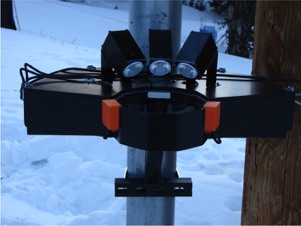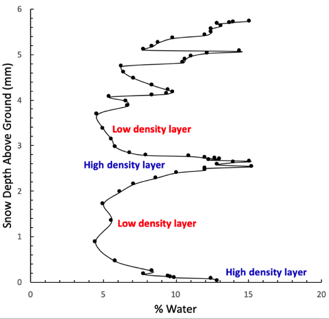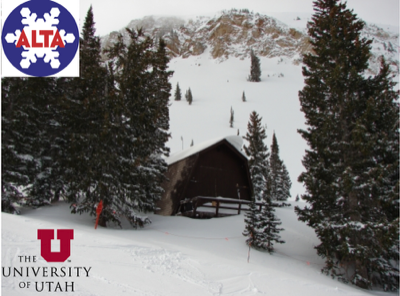Snowflake Stereography and Fallspeed

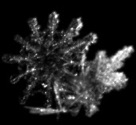
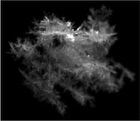


All Multi Angle Snowflake Camera images on these pages are copyright Tim Garrett, and are freely available for non-commercial or educational purposes. Otherwise, please contact Dr. Garrett through the ACCS link above.
All cold weather forecasting models rely on having an accurate description of the relationships between snowflake mass, diameter and fallspeed. Further, these models need to be able to faithfully describe the complex and rapid processes of snowflake aggregation and droplet riming.
Studies of radar or microwave detection
and transmission in the atmosphere rely
on having accurate models for how
electromagnetic radiation interacts with
complex hydrometeor forms.
The physics is sufficiently complicated that it is difficult to arrive at good answers for these problems using theory alone. The formulas that describe these processes must be based on observations of the real world. But this can be a tremendous technical challenge because snow and rimed graupel particles are small, fast moving, delicate and prone to evaporation under examination.
The prototype MASC saw its inaugural Alta
storm on April 30, 2011. The MASC is now
commercially available and has been sold to
customers in the United States, Canada,
France, Korea, and Switzerland for
deployment from Greenland to Antarctica,
from the Alps to the Sierra Nevada.
Check out the pictures at this gallery.
The MASC has been featured internationally
in the news in television documentaries, magazine
and newspaper articles.
Our most recent work supported by the National Science Foundation is the Complex Hydrometeor Aerial Locomotion and Image Capture Experiment (CHALICE). Our field work is based out of the University of Utah Red Butte canyon to study interactions of falling snow with turbulence to study the effects on hydrometeor fallspeed, an important problem for studies of weather and climate. A live feed of MASC photos when it is snowing can be seen at the Snowflake Showcase. The highlight of the project is the University of Utah’s newly developed Differential Emissivity Imaging Distrometer (DEID) which is being used alongside the MASC to obtain the first automated first principles measurements of individual hydrometeor mass and density from which it is possible -- for the first time -- to automatically reconstruct key characteristics of the density of the snowpack as shown above, time series of snowfall, snow water equivalent (SWE), snow density, visibility and type, size distributions of snow, and mass and density-diameter relationships. Millions of hydrometeors may be sampled in a single storm with a precision as low as 0.01 mg per hydrometeor.
Previously, during the winter seasons of 2011-2012 and 2012-2013, Tim Garrett led the Wasatch Hydrometeor Aggregation and Riming Experiment (WASHARX), supported by the National Science Foundation. One MASC was placed at our remote site: the High Alpine Research Laboratory for Diversity in Snow (HARoLDS), located at 10,000' altitude within Collins Gulch at the Alta Ski Area bounds. Alongside the MASC at HARoLDS was an FSSP-100 droplet size distribution probe. At Alta Base at 8500’ alltitude, we placed a second MASC and, through a collaboration with Sandra Yuter at North Carolina State University, a vertically-pointing 24 GHz Micro Rain Radar. Meteorological measurements were obtained at 6 locations throughout the depth of Collins Gulch. We used these data to obtain an unprecedented long-term database for characterizing frozen hydrometeors and their vertical evolution as they fall through a storm.
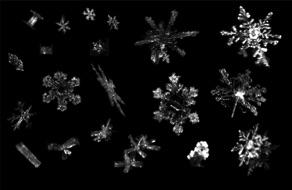
We have designed and built new instruments for automatically measuring hydrometeors. Our first instrument was the Multi-Angle Snowflake Camera, or MASC, that takes automated multi-angle images of snowflakes while they are in free-fall and simultaneously measures their fall-speed. Multi-angle views help to refine area, and mass reconstructions.
